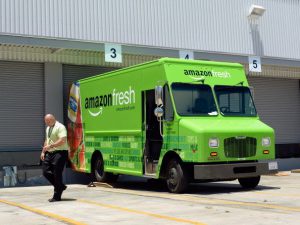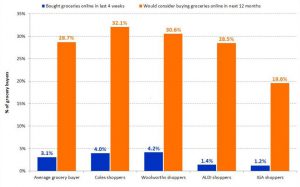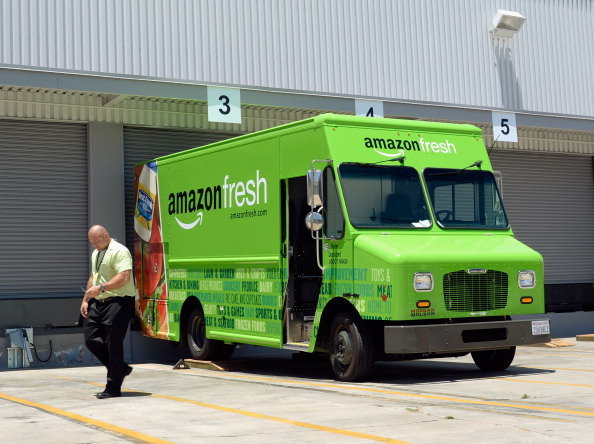
After months of industry speculation, US e-commerce colossus Amazon has finally confirmed what we were all expecting: it’s expanding into Australia. Like many of the other internationals that have entered the local market over the last few years, Amazon’s presence has the potential to shake up the Australian retail landscape—with supermarkets being one of the sectors facing possible disruption.
For many years, Roy Morgan Research has tracked Australian grocery buyers’ interest in doing their grocery shopping online and consistently found that while almost 30% say they’d consider it in the next 12 months, only around 3% actually do so in any given four-week period. So despite positive sentiment for the idea, shopping for groceries online still remains niche in Australia. The question is, will the introduction of high-speed grocery delivery service AmazonFresh change that?
News that Woolworths has established a special taskforce to address this threat is no surprise: Woolworths customers are marginally more likely to do their grocery shopping online (4.2% doing so in an average four weeks) than those who mainly shop at Coles (4.0%), ALDI (1.4%) or IGA (1.2%).
Supermarket customers who buy groceries online vs those who’d consider it

Shopping online
That said, grocery-buyers who mainly shop at Coles are more likely to consider doing some of their grocery shopping on the internet in the next 12 months (32.1%) than those who mainly shop at Woolworths (30.6%), ALDI (28.5%) and IGA (19.6%).
But does this mean that the local supermarket scene is going to be destroyed? Not necessarily. Roy Morgan’s recent Retail-focused State of the Nation report highlighted certain industry trends that may well work in supermarkets’ favour, even once Amazon hits town.
The long-standing gap between consumers who say they’d shop for groceries online and those who actually do it suggests that immediate mass uptake of AmazonFresh is unlikely.
Australians are making more visits to bricks-and-mortar stores, at least partly due to the growing ‘retailtainment’ trend, whereby their shopping experience is enhanced with an extra entertainment element. Savvy supermarkets are already tapping into this with in-store cafés, tastings, or cooking demonstrations: something an online grocery service cannot compete with.
Michele Levine, CEO, Roy Morgan Research, says: “Online grocery shopping is not widespread in Australia yet, but the arrival of AmazonFresh looks set to up the ante with its quick-delivery, low-priced service. It’s worth noting that customers who mainly shop at Coles or Woolworths are more likely than the average grocery buyer to be Technology Early Adopters, and as such, more open to radical new e-commerce propositions such as AmazonFresh.
“But the threat of AmazonFresh is not just about technology, it’s about competitive pricing, service and real estate. With heated price wars already characterising the current Australian supermarket scene, a new player of this magnitude will undoubtedly appeal to grocery shoppers, especially when Amazon CEO Jeff Bezos has already declared: “Your margin is our opportunity”.
“Meanwhile, as traditional supermarkets reduce the range of brands they stock in favour of a greater selection of home brands, the sheer diversity of brands available on AmazonFresh may also appeal to shoppers,” says Levine.
“The incumbents, however, have the advantage of physical locations within easy reach of every shopper. Although Amazon is venturing into the offline space, with its first cashier-less, bricks-and-mortar Amazon Go grocery store currently operating in beta-mode in Seattle, it remains some way off rolling out these stores in Australia. This advantage will buffer local supermarkets while they gauge and respond to the impact of AmazonFresh’s arrival.”



